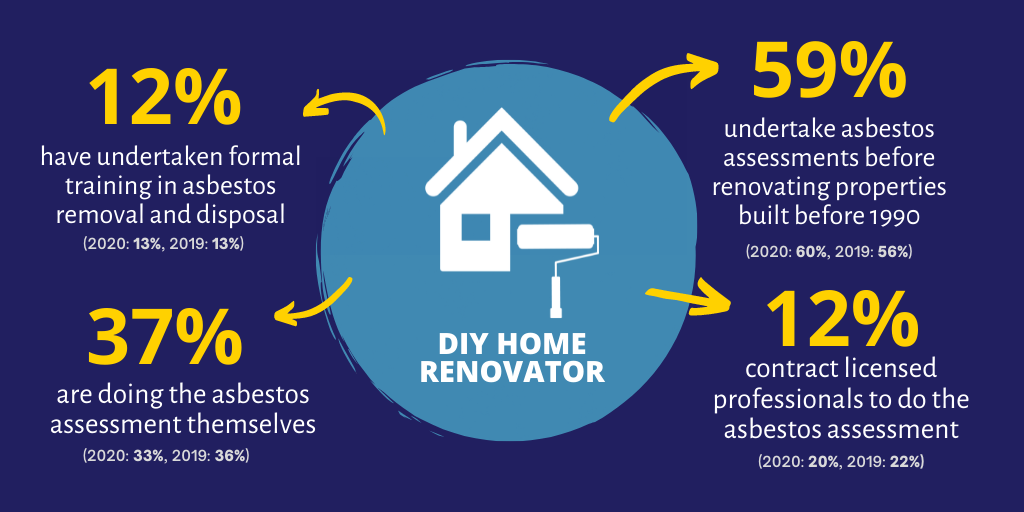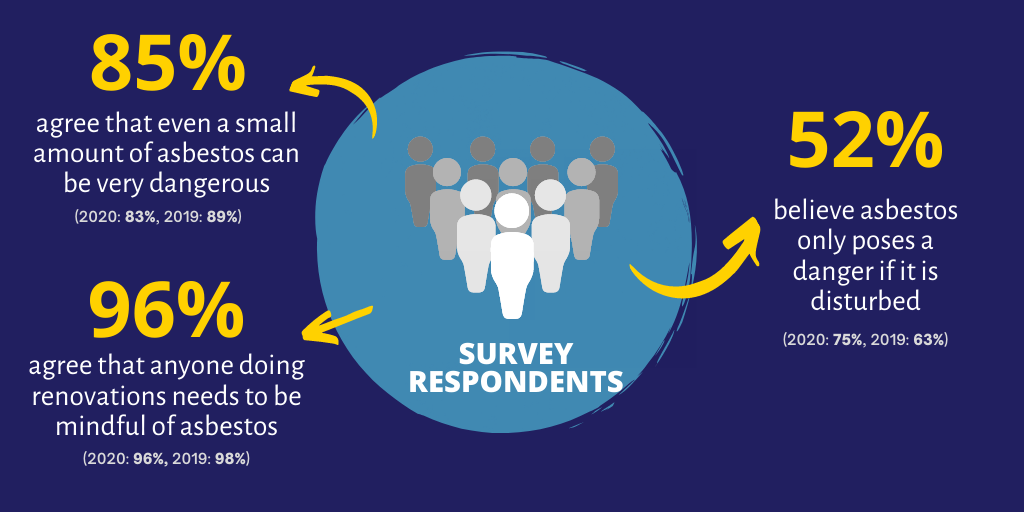Executive Summary
The Latrobe Valley has long been linked to asbestos, with power stations primarily built using asbestos containing materials, as well as workers’ housing for State Electricity Commission employees, and for other industries such as Victorian Railways. Consequently, many people in the Latrobe Valley have succumbed to asbestos related disease.[1]
As detailed in a 2020 study published by the taskforce,[2] it was also common for planning schemes in the mid-20th century to mandate the use of asbestos cladding for the rebuilding of properties following bushfires. Due to its widespread popularity as a building product, it is thought that Australian homes built between 1940 and 1990 are very likely to contain asbestos.
Today there continues to be a high level of awareness of asbestos and asbestos-related issues in the Latrobe Valley:
- 92% agree that asbestos is very common in Australian buildings
- 85% agree that even a small amount of asbestos can be very dangerous
- 96% agree that anyone doing renovations needs to be mindful of asbestos.
The two most highly rated concerns regarding asbestos are illegal dumping and the health impacts of asbestos exposure.
In 2019, 37% were concerned about asbestos in power stations, however this
has now fallen to 12%. It is noted that a large program of asbestos removal works commenced in 2020 at Hazelwood power station and is now almost complete. Another factor for this decrease could be the small sample of respondents aged over 65, which is 11% compared to 20% in the 2019 survey. The over-65 age group is more closely linked to asbestos-related diseases, due to the long latency period between exposure and diagnosis, and therefore the assumption follows that this group is more aware of cases arising from workers in Latrobe Valley’s power stations.
It is acknowledged that the significant decrease in the number of respondents aged over 65 is likely to have a bearing on all areas of the survey, as this age group is more likely to have been involved in home renovations in their lifetime, know more people with asbestos-related disease, and therefore have a greater understanding of the risks of asbestos exposure and higher awareness levels of asbestos-related issues.
Another factor may be the higher number of respondents who have never either lived or worked in the Latrobe Valley; almost three times as many from the initial benchmark survey (up to 17% from 6% in 2019).
A positive result in this year’s survey has been the continuing decline in the number of people who say they are confident or very confident in their own ability to identify asbestos-containing materials (ACMs). This has fallen from 39% in 2019, to 31% in 2020 and 23% in 2021. Further, there has been a corresponding increase in training. In 2020, 22% of those who said they were confident or very confident in identifying ACMs had undertaken formal training, but in 2021, this has increased to 39%. This highlights that those undertaking training understand that it is almost impossible to identify the thousands of products that contain asbestos.
Over half (56%) have been involved in renovations on properties built before 1990 and two thirds (68%) state they would do at least part of the work in a kitchen or bathroom renovation themselves.

In responding to the questions about home renovations, 69% completed this section of the survey, with more than half saying they had undertaken home renovations in the past three years, and one in five saying they intended to undertake renovations in the next 12 months.
With regards to home renovation works recently completed, the number of home renovators assessing for the presence of asbestos themselves is still very high at 37% (33% in 2020, 36% in 2019). This is of concern as only laboratory testing can confirm this for certain; it is impossible to tell by simply looking at a product whether it contains asbestos or not.
Overall, the survey reveals some positive changes, particularly the increased awareness of the difficulty in identifying asbestos-containing materials, and the increase in those who strongly agree they would seek specialist advice if they were unsure something contained asbestos (up to 57% from 46% in 2020).
Of concern is that one in three properties (32%) built before 1990 are still not being assessed for asbestos prior to renovation, which signifies a key area in which to concentrate efforts. This is especially important as 70% of respondents indicated they were planning to undertake home renovations in the future, and 30% of all home renovators surveyed did all of the renovation works themselves without any professional help from tradespersons.
[1] Begg, S., Vos, T. and Stone, C., Mesothelioma as a marker for asbestos-related lung disease in Victoria. Health of Victorians, The Chief Health Officer’s Bulletin., 2001. 1: p. 10–12.
[2] Estimating the volume of residential asbestos remaining in the Latrobe Valley, 2020. https://www.asbestostaskforce.net/publications/

